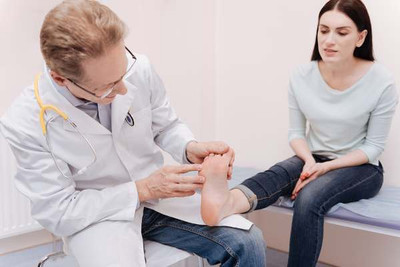 10th Aug 2017
10th Aug 2017
Physical Therapy for Chemotherapy-Induced Peripheral Neuropathy
Peripheral neuropathy is a condition that occurs when there is damage to the peripheral nervous system. The peripheral nervous system is the network that helps transmit information between the central (brain and spinal cord) and the rest of the body. Around 20 million Americans suffer from some form of peripheral neuropathy.
What are the Symptoms of Peripheral Neuropathy?

Some common symptoms of peripheral neuropathy include:
- Numbness or tingling
- Paresthesia (prickling sensation)
- Muscle weakness
- Sensitivity to touch
- Pain without cause
Severe symptoms of Peripheral Neuropathy may include:
- Burning pain
- Muscle wasting
- Paralysis
- Organ and/or gland dysfunction
- Nerve damage
- Breathing difficulties
- Organ failure
Why the Peripheral Nervous System is Important
The peripheral nerves are like the information highway that sensory information travels back to the brain and spinal cord. For example, the peripheral nerves send a signal that our feet are cold or that we need or want to generate movement of some kind. When the peripheral nervous system sustains damage, just like a pothole on a highway, it can disrupt and in some ways crash those vital connections.

A new study found that, years after completing chemotherapy treatment for cancer, 45% of women survivors still had peripheral neuropathy symptoms (an average of 6 years post-treatment). (Read More)
Participants reported still suffering from a loss of feeling in hands and feet, difficulty performing daily tasks and poor physical function. These findings are significant because it means that the chemotherapy-induced neuropathy (CIPN) shouldn’t be dismissed as a mere side-effect and that sufferers should seek rehabilitative treatment, particularly because the researchers found that an increase fall risk and impairment of gait patterns was directly linked to their treatment.
Physical Therapy for Peripheral Neuropathy
- Gait training: When a CIPN patient has gait issues, it’s important to incorporate balance and gait training as part of their rehabilitative regimen. Balance balls, balance pads and balance training pads are all useful tools in addressing balance issues and improving gait.
- Nerve mobilization: Nerve gliding exercises are used in rehabilitation of CIPN to help mobilize the nervous system itself or the structures that surround the nerve, such as neighboring muscles and joints in order to facilitate more ease of movement.
- Therapeutic exercise: Therapeutic exercise using equipment like underwater treadmills or Bi-directional exerciser can be used to increase strength and physical function of patients with CIPN.
- Patient Education: An important part of rehabilitation for CIPN patients is providing them with education regarding assistive devices (ambulatory devices like braces or walkers) and alternative ways to safely perform daily tasks.
With peripheral neuropathy, symptoms can appear suddenly, progress rapidly, and then slowly resolve as damaged nerves heal. Chemotherapy-induced peripheral neuropathy is an under-recognized side-effect of cancer treatment that has the ability to affect a patient’s quality of life long after cancer-treatment has been concluded. Studies like these show the need for early intervention and rehabilitation treatment post chemotherapy to help cancer survivors resume their daily activities.
Related Article: Therapeutic Modality Guide - Intro to Popular PT Products





